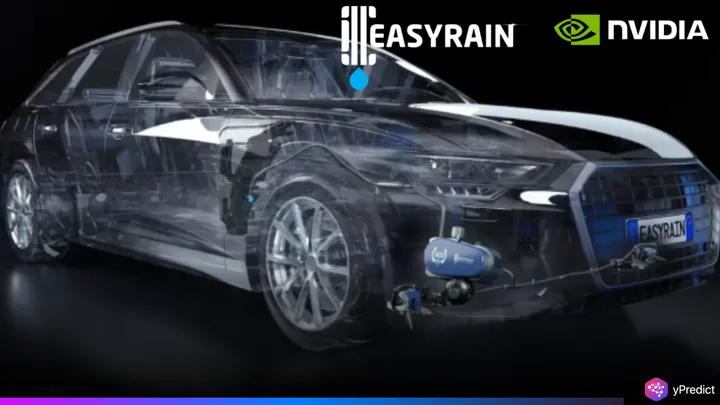
Easyrain, a tech startup based in Italy, has joined the NVIDIA Halos AI Systems Inspection Lab in Paris. The partnership, announced at the 2025 NVIDIA GTC AI Conference, focuses on inspecting Easyrain’s virtual sensor that detects aquaplaning. The company’s DAI (Digital Advanced Information) platform powers the sensor and helps vehicles drive more safely on wet roads. Easyrain becomes the first Italian firm to join this prestigious lab. The move reflects growing efforts to address road safety as autonomous and semi-autonomous vehicles become more common.
How Easyrain’s Software Helps Cars Grip the Road?
Easyrain built the DAI platform as a software-only system that detects low-grip surfaces, especially in wet conditions. Unlike traditional systems that rely on hardware sensors, DAI works virtually, using algorithms and existing vehicle data. That means carmakers don’t need to install new equipment, saving time and cost. Easyrain plans to launch the DAI system in a premium vehicle model in 2026.
By joining NVIDIA’s AI Systems Inspection Lab, Easyrain gains access to rigorous safety and performance testing. The lab, accredited by the ANSI National Accreditation Board (ANAB), helps ensure AI systems meet tough standards in reliability, cybersecurity, and functionality. “Our technologies are developed to keep vehicles safe in low-grip conditions,” said Giovanni Blandina, Easyrain’s CEO and founder. “This step confirms our commitment to safer autonomous driving.”
Bringing Safety to the Streets, What’s Next for Easyrain and Its Virtual Sensor
The DAI platform offers a new approach to making self-driving and driver-assisted vehicles safer in risky conditions. Aquaplaning, when a vehicle loses traction due to water on the road, is a major hazard. Easyrain’s software detects this risk early, allowing cars to respond before losing control. This could be especially important for Level 3 autonomous vehicles and above, which rely on real-time sensing to make decisions without human input. The fact that the AI system needs no added hardware makes it attractive to automakers trying to balance safety, cost, and scale.
Easyrain’s inclusion in NVIDIA’s lab brings validation and scrutiny. NVIDIA’s lab will test how well the DAI platform works with its Halos components, widely used in autonomous systems. The inspection lab looks at everything from software stability to cybersecurity resilience. “We’ve believed in this vision from the start,” said Blandina. “And now, to be part of this lab, it’s a proud moment for our entire team.”
Easyrain’s Entry Signals Italy’s Growing Role in AI-Driven Automotive Innovation
Easyrain’s collaboration with NVIDIA signals more than just a product launch. It reflects the growing role of Italian tech companies in AI-powered automotive safety. As vehicles become smarter, virtual systems like DAI offer scalable and effective ways to reduce accidents and improve reliability.
With its sensor set to debut in 2026, Easyrain is taking bold steps to lead in wet-road safety. The NVIDIA lab partnership gives the company a boost in credibility and puts its solution under the microscope of international standards. Whether other automakers follow suit remains to be seen. But the industry is watching. As software becomes the backbone of autonomous driving, platforms like DAI could redefine what vehicle safety looks like in the years ahead.





